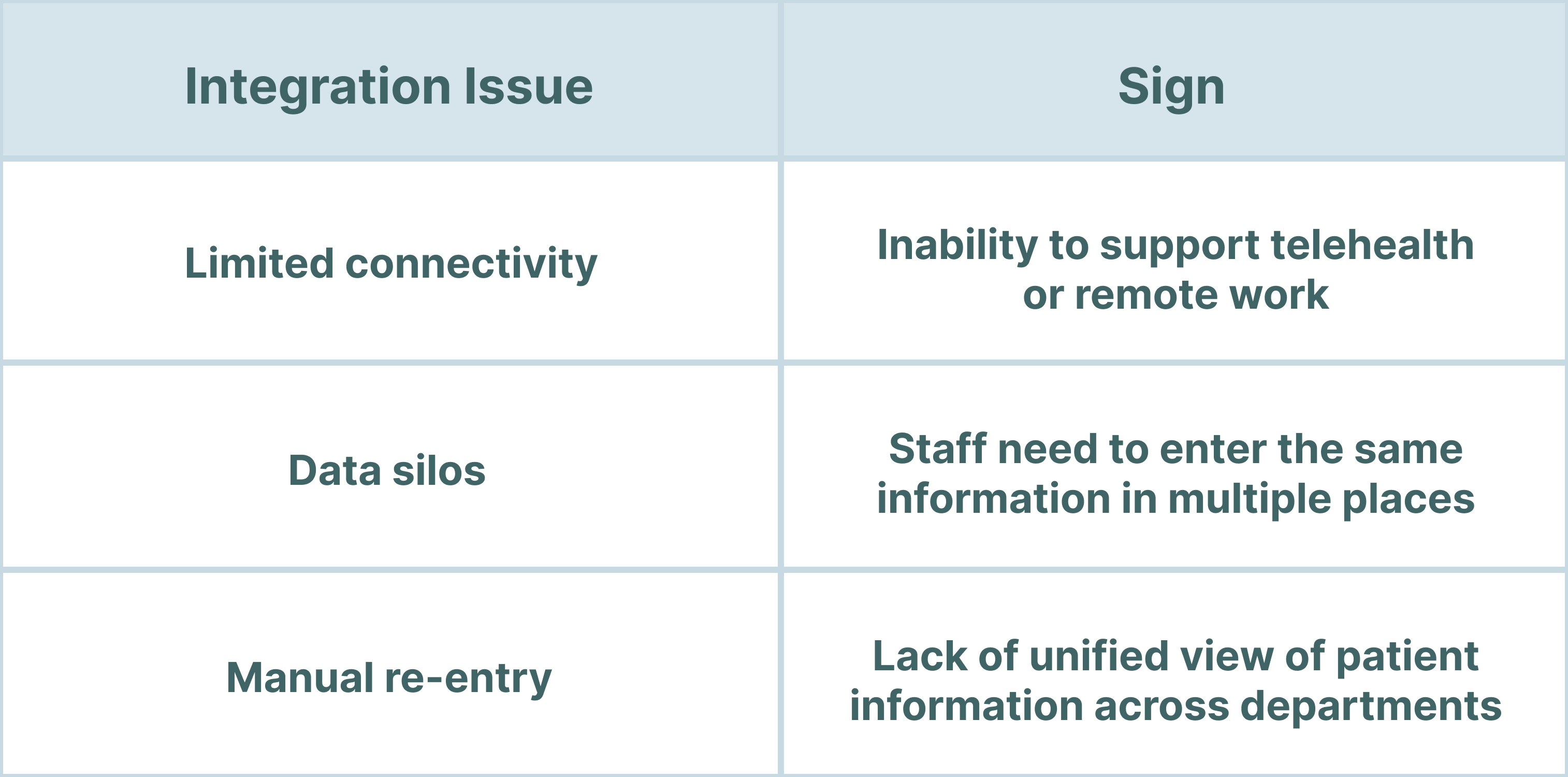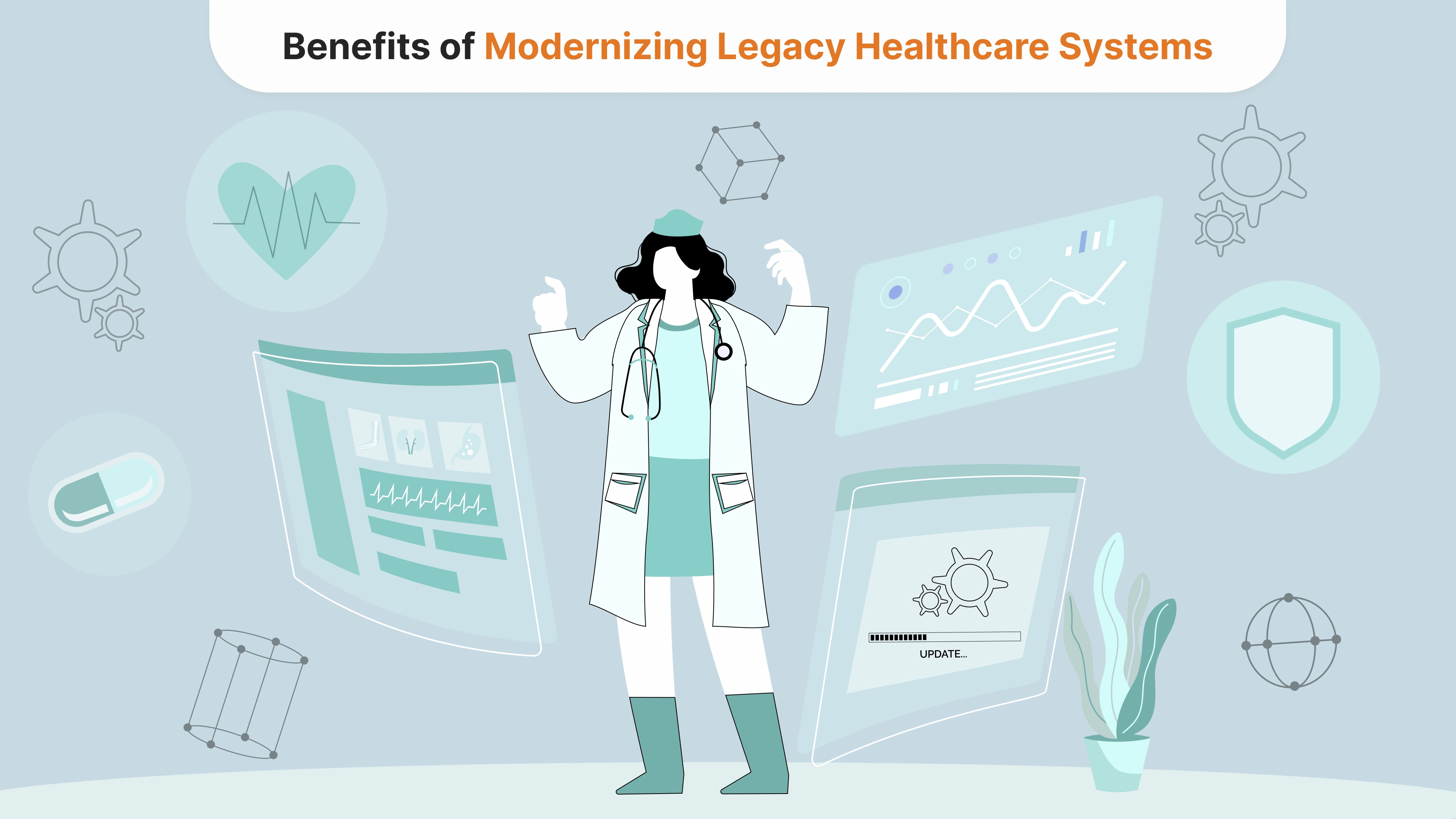

When and Why You Need to Update Your Legacy Healthcare Solutions
Healthcare organizations worldwide face major hurdles with outdated technology systems. Legacy healthcare solutions that were once innovative now create serious risks to patient care, data security, and operational efficiency. Aging systems affect everything from daily operations to long-term strategic planning. System modernization has become a critical priority for healthcare providers.
Modern healthcare software brings multiple benefits such as improved cybersecurity, better data analytics capabilities, and stronger regulatory compliance. Healthcare providers should review their current systems to spot signs of performance degradation, security vulnerabilities, and compatibility issues. This piece gets into the telltale indicators that signal the need for an upgrade and shows the advantages of modern healthcare systems. It also presents practical strategies for successful system migration.
Signs Your Legacy Healthcare System Needs an Upgrade
Healthcare facilities need to spot signs of outdated systems because this is significant in delivering optimal patient care and improving efficiency. Medical centers should review their existing systems to identify upgrade requirements regularly. Here are key indicators that your legacy healthcare system may need an upgrade.
Decreased efficiency and productivity
When healthcare staff consistently report system slowdowns, frequent crashes, or extended load times for basic tasks like accessing patient records, it’s a clear sign of an outdated system. If doctors and nurses are spending excessive time waiting for the system to respond or repeatedly entering the same data, it indicates a need for an upgrade.
Security vulnerabilities
Signs of security issues in legacy systems include:
Inability to implement modern security measures like multi-factor authentication
Increasing frequency of security incidents or unauthorized access attempts
Difficulty in meeting current encryption standards for data protection
Lack of regular security updates from the vendor
Compliance challenges
Watch for these compliance-related signs:
Receiving warnings about potential HIPAA violations
Struggling to implement new regulatory requirements
Inability to generate detailed audit trails of system access and changes
Difficulty in producing compliance reports without manual intervention
Integration limitations
Look for these integration challenges:

Escalating maintenance costs
Signs of unsustainable maintenance include:
Consistently increasing IT budget for system maintenance year over year
Difficulty in finding technicians with the right skills to maintain the system
Vendor announcements about plans to discontinue support for the system
Need for dedicated IT staff with specialized expertise in the legacy system
By monitoring these signs, healthcare organizations can proactively identify when their legacy systems are hindering operations and patient care, signaling the need for an upgrade. Regular assessment of these indicators helps ensure that healthcare facilities maintain efficient, secure, and compliant systems that support optimal care delivery.
Benefits of Modernizing Legacy Healthcare Systems

Modern healthcare solutions provide remarkable benefits way beyond simple technology upgrades. Organizations that implement these systems see major improvements in many operational areas.
Improved patient care and outcomes
Modern healthcare systems deliver better patient care through advanced data analytics and immediate monitoring capabilities. Healthcare providers now use intelligent automation and remote patient monitoring to deliver better care. 70% of executives plan to invest in these technologies. These innovations create customized treatment plans that help patients participate through easy-to-use interfaces.
Improved data security and compliance
Modern systems protect healthcare data by a lot through:
Advanced encryption protocols with automatic security updates
Complete audit trails that ensure regulatory compliance
Live threat detection and instant response capabilities
Improved access control systems with multi-factor authentication
Increased operational efficiency
System modernization streamlines healthcare operations through automated routine tasks and optimized resource allocation. Modern solutions help improve supply chain management while boosting workforce efficiency with better human-machine collaboration. Healthcare organizations that update their systems report major reductions in manual data entry and their staff’s productivity increases substantially.
Better interoperability
Healthcare systems now break down data silos to enable smooth information exchange between departments and facilities. This connectivity brings several advantages:

Cost savings in the long run
Healthcare organizations that use modern systems save money over time through lower maintenance costs and streamlined processes. The largest longitudinal study shows that connecting medical devices could eliminate about USD 36 billion in waste from inpatient settings. On top of that, modern systems cut down technical debt and need fewer specialists to maintain legacy systems.
Healthcare organizations can save even more money by moving to cloud-based solutions that offer flexible storage and lower maintenance costs. These improvements help organizations invest their resources in innovative care delivery models and patient-focused programs.
Strategies for Upgrading Legacy Healthcare Systems
Healthcare organizations can choose from multiple strategic approaches to modernize their technology infrastructure. Each approach provides distinct advantages that align with an organization's specific needs and constraints. A clear understanding of these strategies plays a significant role in transforming legacy systems successfully.
Rehosting
Rehosting, also known as “lift and shift,” allows healthcare organizations to move their legacy solutions to a new infrastructure. The code remains largely unchanged during this process. Healthcare teams can quickly move to cloud environments and keep their existing functionalities intact. Organizations save 30% cost reduction on infrastructure maintenance through rehosting. This makes rehosting an excellent starting point for modernization initiatives.
Replatforming
Replatforming advances modernization by adapting the system to new platforms that preserve core functionality. This strategy includes:
Upgrading database systems to enhance performance
Implementing modern security protocols
Enhancing system scalability using cloud capabilities
Healthcare organizations that choose this approach can use new platform features and maintain their existing workflows with minimal disruption.
Refactoring
Refactoring makes existing code better by restructuring and optimizing it without changing how it works externally. This approach works best with healthcare systems that have strong basic architecture but need improvements in these areas:

Rearchitecting
Modern technology capabilities demand a fundamental redesign of application architecture. Healthcare organizations can benefit from this detailed redesign approach that:
Uses microservices architecture to improve flexibility
Boosts compatibility with modern healthcare systems
Adds advanced security features
Merges innovative technologies like AI and IoT
Rebuilding
Healthcare organizations rebuild applications by redeveloping them from scratch while keeping their original scope and specs. Legacy systems built with outdated tech like COBOL or FORTRAN often need this approach. The process takes more time but comes with clear benefits:
Solutions that match each patient’s exact needs
Modern programming languages at work
Better alignment with today’s healthcare standards
Better treatment quality through efficient workflows
Teams need to evaluate key aspects like system health, available resources, and future goals carefully. Healthcare teams must think about their technical debt, compliance needs, and operational limits to pick the right approach. Successful modernization works best with a mix of these strategies that roll out in phases. This helps avoid disrupting critical healthcare services.
Conclusion
Healthcare organizations must invest heavily in modern systems to address growing technology needs and security threats. Every year, outdated systems cost healthcare providers billions through lower efficiency, security risks, and compliance issues. Healthcare organizations need system updates to stay competitive and maintain high patient care standards. These updates lead to better patient care, stronger security, and major cost savings.
Healthcare leaders should assess their existing systems and choose the right modernization approach based on their requirements and available resources. Different approaches like rehosting, re-platforming, or rebuilding systems completely work better for different organizations. Medical facilities that accept new ideas in modernization can provide better patient care while cutting operational costs and meeting regulatory requirements. Healthcare organizations committed to excellence in modern medical service delivery cannot ignore this technological advancement.
Faq
When should you update your legacy healthcare software systems, and why is it necessary?
+Healthcare organizations need to routinely update their legacy software systems to address security vulnerabilities and ensure efficient data management. Implementing additional security measures such as encryption and multi-factor authentication is also crucial.
What defines a legacy system in healthcare?
+In healthcare, a legacy system refers to outdated software used in medical facilities that often lacks compatibility with newer systems, presents security risks, requires expensive maintenance, and negatively impacts overall efficiency. These systems are typically unsupported or neglected due to technological advancements.
Why is it important to improve healthcare systems?
+Enhancing healthcare systems is vital for increasing patient safety and the quality of care. Improvements can lead to reduced infection rates in hospitals, shorter stays, and overall better health outcomes, significantly benefiting both individual patients and the broader healthcare system.
What improvements are necessary in healthcare systems?
+Healthcare systems need to empower patients by providing them with essential information and allowing them to make informed decisions about their care. It is important to respect patient preferences and promote shared decision-making to accommodate individual needs effectively.
Tell us about your project
Fill out the form or contact us

Tell us about your project
Thank you
Your submission is received and we will contact you soon
Follow us
